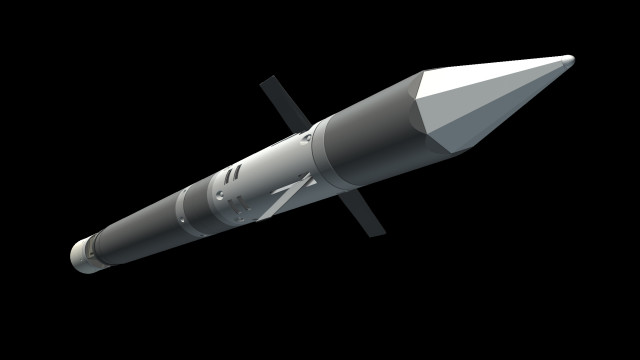EUROPEAN COOPERATION IN DEFENCE OCCAR CONTRACTS EUROSAM FOR ADDITIONAL SAMP/T NG SYSTEMS
THE EUROPEAN LONG-RANGE SURFACE - AIR MISSILE DEFENCE SYSTEM HAS BEEN CHOSEN BY ITALIAN AIR FORCE
On 18 July 2023, OCCAR-EA Director Joachim Sucker and
eurosam Managing Director Eva Bruxmeier signed the Amendment of the FSAF-PAAMS Sustainment & Enhancement (S&E) contract for the procurement of new generation ground based air defence systems SAMP/T NG for Italian Air Force. This procurement adds to the SAMP/T NG production ordered in January 2023 for the Italian Army and French Air and Space Force.
Organisation Conjointe de Coopération en matière d'Armement (OCCAR) has awarded this amendment to the S&E contract, by delegation of Segretariato Generale della Difesa e Direzione Nazionale degli Armamenti (SEGREDIFESA) and Direction Générale de l’Armement (DGA), to the Italo-French consortium
eurosam; backed by its three shareholders MBDA France, MBDA Italia and Thales LAS France.
The contract was signed in the presence of SEGREDIFESA, DGA and Italian Air Force representatives as it sees this Armed Force joining as a new FSAF-PAAMS domestic user, following the Italian Army and Navy, the French Navy and Air and Space Force and the British Royal Navy.
With this contract, Italian Air Force will be equipped with SAMP/T NG ground-to-air defence capabilities, fitted with the Kronos Grand Mobile High Power radar from Leonardo (see note).
The SAMP/T NG system development, launched in 2021 in cooperation between France and Italy, is an enhancement of the SAMP/T system in service since 2010 and currently deployed in Europe and in the Middle-East. The SAMP/T NG system is based on:
- An enhanced missile to enlarge the ASTER family: the ASTER Block 1 NT (new technology) from MBDA including a new seeker and a new computer.
- An upgraded launcher.
- A 360-degree new multifunction rotating Active Electronically Scanned Array radar: the Kronos Grand Mobile High Power from Leonardo for Italy and the Ground Fire 300 from Thales for France.
- A common command and control module based on upgraded open command and control software architecture and enhanced connectivity.
The SAMP/T NG is designed to achieve all Ground-Based Air Defence missions with enhanced key capabilities. It is a long-range surface-to-air missile defence system able to:
- Offer a 350 km-plus aerial surveillance range and a 150 km-plus interception range.
- Operate in a dense civilian air environment, in cooperation with friendly military aircraft and fully integrated into air defence networks.
- Provide a 360-degree protection to armed forces and sensitive civil or military sites.
- Offer a dual capability to defeat simultaneously all types of targets, in any combination of types.
- Counter emerging and future threats as diverse as hypersonic missiles, manoeuvring ballistic missiles, re-entry vehicle ballistic missiles, high velocity cruise missiles, UAVs and highly manoeuvring aircraft, in a saturation attack scenario and a challenging cyber environment.
- Deploy quickly with a limited number of personnel and integrate easily in an air-defence network.
With these enhanced features, SAMP/T NG will provide to France, Italy and any other customer, the capability to guarantee their airspace sovereignty, to protect their territory and population and to protect their troops in operations.
Notes to readers:
eurosam was established in June 1989 as a joint venture of MBDA and Thales, European leaders in missiles, systems and radars, endowing it with major expertise in terms of solutions for air defence.
eurosam is the industrial prime contractor and system design authority for the development, production, marketing, sales and in-service support of a range of medium and long range naval and ground-launched air-defence missile systems also known as Future Surface-to-Air Family of ASTER missile systems. These systems were developed under contract from the French and Italian Governments, who in the late 1980s had come to similar conclusions as to their air-defence operational requirements. This cooperation, enlarged to the UK in 1996, has experienced export successes, both in naval and land configurations.
- About the Kronos Grand Mobile High Power radar :
A member of the Kronos radar family, Leonardo’s Kronos Grand Mobile High Power is an enhanced version of the sensor, designed to meet evolving operational scenarios. Supported by Active Electronically Scanned Array (AESA) technology, the multi-function, multi-mission C-band Kronos Grand Mobile High Power (GMHP) radar focuses mainly on surveillance and air defence in land and coastal environments.
 www.mbda-systems.com
www.mbda-systems.com



